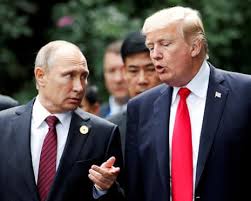Anchorage, Alaska — August 15, 2025
The eyes of the world are locked on a single location today: Joint Base Elmendorf-Richardson in Anchorage, Alaska. For the first time since 2019, U.S. President Donald Trump and Russian President Vladimir Putin are sitting across the same table but this time, the stakes are higher than ever.
The three-year-long Ukraine war, which has redrawn maps, destabilized economies, and taken countless lives, sits at the heart of this first face-to-face meeting between the two leaders since Russia’s 2022 invasion. The question on everyone’s lips: Can this be the moment the guns finally fall silent?
Why This Meeting Is Historic
This is not just another diplomatic handshake.
- First In-Person Summit Since the War Began: Both leaders have communicated indirectly through intermediaries, but this is the first direct confrontation on the war’s future.
- First U.S.-Hosted Russia–U.S. Summit in Alaska: Chosen for its symbolic geography a bridge between East and West and its historic role in Cold War-era diplomacy.
- A Potential Turning Point in Global Stability: The decisions made here could reshape international alliances, energy flows, and the security architecture of Europe for decades.
The Core Objective: Ending the Ukraine War
At the top of the agenda is a possible ceasefire framework — something that has eluded world leaders since the war’s earliest days.
Potential talking points include:
- Immediate Ceasefire: Halting large-scale offensives to prevent further loss of life.
- Demilitarized Zones: Creating neutral areas along contested borders.
- Security Guarantees for Ukraine: Ensuring Ukraine’s sovereignty while addressing Moscow’s calls for NATO non-expansion.
- Sanctions Relief in Exchange for Compliance: Discussing phased easing of economic sanctions on Russia if verifiable peace steps are taken.
- Reconstruction Assistance: Mobilizing international funding to rebuild Ukrainian cities devastated by war.
Beyond Ukraine: Other Global Flashpoints
While Ukraine is the burning priority, diplomats expect other pressing issues to surface:
- Nuclear Arms Control: Extending or renegotiating treaties to avoid a dangerous new arms race.
- Cybersecurity Norms: Reducing the frequency of state-backed cyberattacks.
- Energy Security: Stabilizing oil and gas markets, which have been volatile since 2022.
- China’s Rising Influence: Potential cooperation or competition in counterbalancing Beijing’s global ambitions.
The Atmosphere in Anchorage
Security is unprecedented. Roads around the summit venue are locked down. Military aircraft patrol Alaskan skies. News crews from every continent are stationed outside the base, hoping to capture any sign of progress or tension.
Inside, the mood is guarded but historic. Both leaders know the world is watching, and neither can afford a public diplomatic failure. Trump, in his signature direct style, has hinted this is a “feel-out” meeting before broader talks. Putin, ever the strategist, arrives with the confidence of someone who has outlasted multiple Western leaders.
Reactions From Key Players
- Ukraine: President Volodymyr Zelenskyy has cautiously welcomed the meeting but insists on “peace with dignity,” meaning no surrender of Ukrainian sovereignty.
- European Union: Leaders from Germany, France, and Poland have called for transparency in any agreements.
- China: While officially neutral, Beijing will closely watch the outcome to gauge shifts in global power dynamics.
- Global Markets: Oil prices have been swinging all morning, reflecting investor uncertainty about possible sanctions relief.
What’s at Stake
A successful outcome could:
- Halt one of the deadliest conflicts of the 21st century.
- Reset U.S.–Russia relations after years of hostility.
- Stabilize global food and energy prices.
- Reduce the risk of a broader NATO–Russia confrontation.
A failure could:
- Embolden further military escalation.
- Deepen divisions in Europe and NATO.
- Push Russia closer to China in a strategic alliance.
- Extend the humanitarian crisis in Ukraine for years to come.
Timeline of the Day
- 11:00 a.m. Alaska Time (19:00 GMT): Private talks begin.
- 12:30 p.m.: Expanded talks with foreign policy teams.
- 2:00 p.m.: Working lunch expected to focus on economic and humanitarian issues.
- 4:00 p.m.: Joint press conference, where the world will hear the first outcomes.
Could This Be the Beginning of the End?
Diplomacy has failed many times before, but history shows that even the most entrenched conflicts can shift with the right mix of pressure, incentives, and timing. With both leaders under domestic and international pressure to deliver results, the Anchorage Summit could become the 2025 equivalent of the Camp David Accords or the Reykjavik Summit moments that defined decades of foreign policy.

